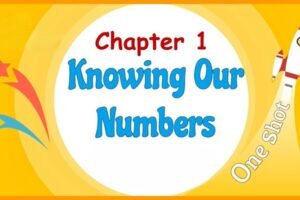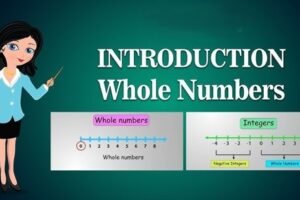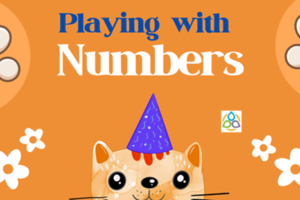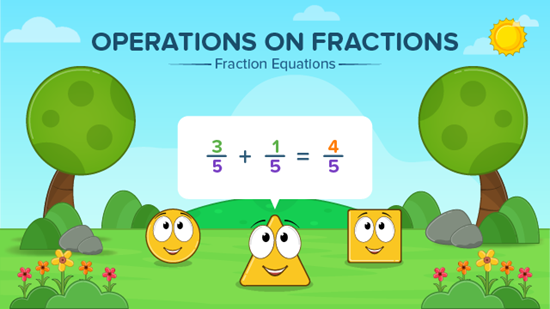
Chapter 7: Fractions ( Best Solution )
Chapter 7: Fractions – Mathemetics
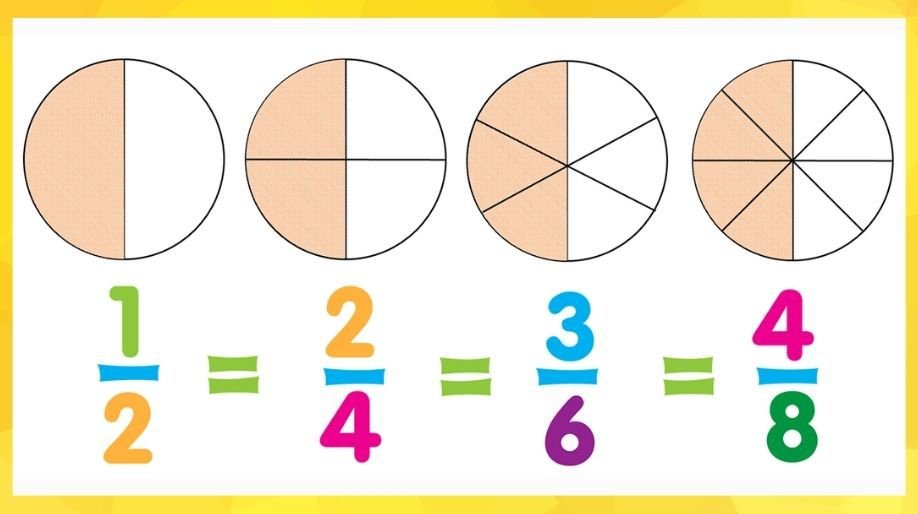
Fractions:
Fractions are an essential concept in mathematics, used to represent parts of a whole. Chapter 7 of Class 6 Maths focuses on understanding, comparing, and performing operations with fractions. Below are comprehensive notes on this chapter:
1. What is a Fraction?
A fraction represents a part of a whole. It is written in the form a/b, where:
- a is the numerator (the part considered).
- b is the denominator (the total number of equal parts).
Examples:
- 1/2 represents one part of a whole divided into two equal parts.
- 3/4 represents three parts of a whole divided into four equal parts.
Key Terms:
- Proper Fraction: The numerator is less than the denominator (e.g., 3/5).
- Improper Fraction: The numerator is greater than or equal to the denominator (e.g., 7/4).
- Mixed Fraction: A combination of a whole number and a proper fraction (e.g., 2 1/3).
2. Types of Fraction.
- Like Fraction: Fraction with the same denominator (e.g., 1/7, 3/7, 5/7).
- Unlike Fraction: Fraction with different denominators (e.g., 1/4, 2/5, 3/8).
- Equivalent Fraction: Fraction that represent the same value but have different numerators and denominators (e.g., 1/2 = 2/4 = 4/8).
How to Find Equivalent Fractions:
Multiply or divide both the numerator and the denominator by the same non-zero number. For example:
- Multiply 1/3 by 2: .
3. Representation of Fractions
Fraction can be represented visually and on a number line:
a. Visual Representation:
A fraction can be shown using shaded portions of a shape, such as a circle or rectangle. For example:
- To represent 3/4, divide a rectangle into 4 equal parts and shade 3 of them.
b. Number Line Representation:
To represent fractions on a number line:
- Divide the segment between 0 and 1 into equal parts based on the denominator.
- Mark the numerator’s position on the number line.
Example: For 3/5, divide the line between 0 and 1 into 5 equal parts. Mark the third part.
4. Simplification of Fraction
To simplify a fraction:
- Find the greatest common divisor (GCD) of the numerator and denominator.
- Divide both by the GCD.
Example: Simplify 12/16:
- GCD of 12 and 16 is 4.
- Divide both by 4: .
5. Comparing Fraction:
a. Like Fraction:
Compare the numerators directly. The fraction with the larger numerator is greater.
Example: Compare 3/7 and 5/7:
- Since 5 > 3, .
b. Unlike Fraction:
Convert them to like fraction by finding a common denominator, then compare the numerators.
Example: Compare 2/3 and 3/4:
- Find the least common denominator (LCD): .
- Convert: and .
- Compare: , so .
6. Addition and Subtraction of Fraction
a. Like Fraction:
Add or subtract the numerators while keeping the denominator the same.
Example: .
b. Unlike Fraction:
- Convert to like fractions by finding a common denominator.
- Add or subtract the numerators.
Example: :
- LCD = 12.
- Convert: , .
- Add: .
7. Multiplication of Fraction:
To multiply two fractions:
- Multiply the numerators.
- Multiply the denominators.
Example: .
Multiplication with Whole Numbers:
Convert the whole number into a fraction with denominator 1 and then multiply.
Example: .
8. Division of Fraction:
To divide fraction:
- Take the reciprocal of the divisor.
- Multiply the fraction.
Example: :
- Reciprocal of 2/5 is 5/2.
- Multiply: .
9. Conversion of Fraction:
a. Mixed Fraction to Improper Fraction:
Use the formula:
Example: Convert 2 3/4:
- .
- Improper fraction: .
b. Improper Fraction to Mixed Fraction:
Divide the numerator by the denominator. The quotient is the whole number, and the remainder is the numerator of the fractional part.
Example: Convert 17/5:
- remainder 2.
- Mixed fraction: .
10. Decimal Representation of Fraction:
To convert a fraction to a decimal, divide the numerator by the denominator.
Example: Convert 3/8:
- .
11. Word Problems on Fraction:
Word problems involve real-life scenarios where fraction are used. Steps to solve:
- Read the problem carefully.
- Identify the fractions involved.
- Perform the required operations (addition, subtraction, multiplication, or division).
- Simplify the answer, if necessary.
Example:
A rope of length 5/6 m is cut into two pieces. One piece is 1/3 m. What is the length of the other piece?
- Total length = 5/6.
- One piece = 1/3.
- Length of the other piece = .
- Convert to like fractions: , .
- Subtract: .
- Answer: The other piece is 1/2 m long.
12. Applications of Fraction:
Fractions are used in various real-life scenarios, such as:
- Cooking (e.g., measuring ingredients).
- Dividing objects (e.g., sharing a pizza).
- Financial calculations (e.g., dividing expenses).
13. Key Points to Remember
- A fraction represents a part of a whole.
- Simplify fraction whenever possible.
- Always convert to like fraction for addition or subtraction.
- Multiplication and division of fraction do not require a common denominator.
- Mixed fraction can be converted to improper fractions and vice versa.
By mastering these concepts, students can build a strong foundation in fractions, which is crucial for understanding advanced mathematical topics.
Download PDF Notes and Excercise solution of the Chapter.
Please Visit Readspot for Hindi Medium Study Material

